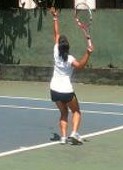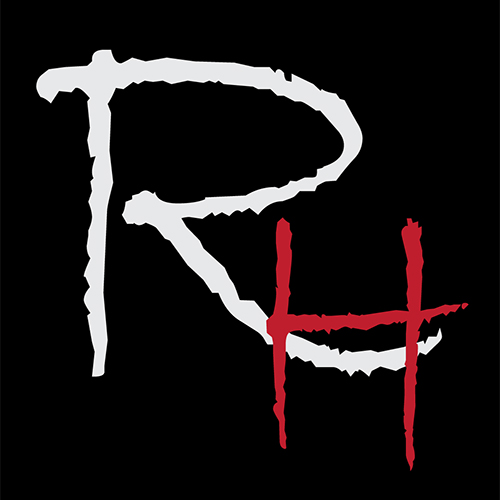
Becoming a professional tennis player is a dream for many, but the journey is like climbing the mount Everest, with challenges that extend far beyond technical skill and physical prowess.
To succeed and sustain a career at the elite tennis level, aspiring professionals must cultivate a deep understanding of their inner psychological landscape—their wants, needs, and tolerance levels—and how these interact with the layers of internal and external factors of the Tennis.
Identifying Wants, Needs, and Tolerance Levels
At the foundation of a professional tennis player’s journey lies in self-awareness. It’s not enough to want to be a professional; understanding why that desire exists, what truly motivates it, and what sacrifices can realistically be made is paramount.
1. Identifying Wants: Force of Passion
A “want” is often the initial spark – the dream of lifting a Grand Slam trophy as top ATP or WTA player, the desire for recognition, monetary or for the sheer love of the game. However, for sustainable motivation, these wants need to be deeply rooted and intrinsically driven.
- Intrinsic vs. Extrinsic Motivation: Research consistently highlights the importance of intrinsic motivation in sustained athletic performance. Players driven by the pure enjoyment of the game, the challenge of self-improvement, and the satisfaction of mastering skills tend to exhibit greater persistence and resilience than those primarily motivated by external rewards like money or fame (Vallerand, 2007). Aspiring professionals should engage in self-reflection to distinguish between these motivators. Do you genuinely love the grind of training, the pressure of competition, and the constant pursuit of perfection, or is it solely the allure of the spotlight?
- Goal Setting: Effective goal setting is the foundation aspect of identifying wants. Rather than vague aspirations, specific, measurable, achievable, relevant, and time-bound (SMART) goals provide direction and a sense of progress. For example, instead of “I want to be a pro,” a more effective goal might be “I want to improve my first-serve percentage to 70% within the next six months to enhance my competitive edge in ITF Futures events.” Research on goal achievement motivation in tennis indicates that higher levels are found among professional top players compared to junior players (Sarrazin et al., 2002).
2. Tennis Needs: Foundation of Well-being and Performance
Beyond desires, “needs” are the fundamental requirements for optimal performance and well-being. These extend beyond basic physiological necessities to encompass psychological and social needs.
- Autonomy, Competence, and Relatedness (Self-Determination Theory): Deci and Ryan’s Self-Determination Theory (SDT) posits that humans have three innate psychological needs: autonomy (feeling in control of one’s actions), competence (feeling effective and capable), and relatedness (feeling connected to others). For a tennis player, this translates to:
- Autonomy: Having a say in training plans, match strategies, and career decisions, rather than feeling solely dictated by coaches or parents.
- Competence: Experiencing mastery and progress in their skills, which reinforces their belief in their ability to succeed it takes time and experience .
- Relatedness: Building strong, supportive relationships with coaches, teammates, family, and a support team. Lack of fulfillment in any of these areas can lead to burnout and decreased motivation. if you consider any top ATP /WTA player or in any other high level athletes the story says it all
- Physical Needs: This category goes beyond just eating and sleeping. It involves understanding one’s unique physical requirements for S&C, recovery, injury prevention, and peak performance. This includes tailored nutrition plans, adequate rest, positive mindset and proactive strength and conditioning. Neglecting these can lead to chronic injuries and hinder long-term development (Hainline et al., 2017).
- Mental and Emotional Needs: The emotional rollercoaster of professional tennis demands significant mental fortitude. Recognizing and addressing needs for emotional regulation, stress management, and maintaining a positive mindset are vital component. This might involve working with a sports psychologist to develop coping strategies for anxiety, frustration, and the fear of failure (Weinberg & Gould, 2018).
3. Tolerance Levels: Overcoming Adversity
Tolerance levels refer to a player’s capacity to endure physical discomfort, mental pressure, setbacks, and the demands of the professional tennis lifestyle.
- Pain Tolerance: Elite athletes often exhibit higher pain tolerance compared to recreationally active individuals, particularly in endurance sports (Tesarz et al., 2012). For tennis players, this means being able to push through physical discomfort during long matches, demanding training sessions, long tennis tour and even playing with minor aches. However, this must be balanced with the wisdom to between tolerable discomfort and an injury that requires rest and medical attention. Keep your ego out of this equation .
- Stress and Pressure Tolerance: Professional tennis equals high-pressure. Players must tolerate intense scrutiny, the constant threat of losing, and the pressure of significant financial stakes. Mental toughness, defined as the ability to maintain focus, manage emotions, and persist through adversity, is paramount (Fletcher & Fletcher, 2005). Developing this involves simulating pressure scenarios in training, practicing controlled breathing techniques, and employing positive self-talk and visualization (Mon-Espace Enseignant Tennis, 2024).
- Uncertainty Tolerance: The professional tennis circuit involves constant travel, varying playing conditions, and unpredictable match schedules. Players must tolerate a high degree of uncertainty regarding rankings, prize money, and career longevity. Adaptability and flexibility are key psychological traits.
- Frustration Tolerance: Tennis is a game of errors. Players will inevitably make mistakes, miss easy shots, and face unfair calls. The ability to quickly recover from frustration and maintain composure is a hallmark of successful professionals.
Interplay of Internal and External Factors
The journey to becoming a professional tennis player is a dynamic interplay between a player’s internal world and the external environment.
Internal Factors: Player’s Intrinsic Characteristics
- Mental Toughness and Resilience: As mentioned, these are critical. Research suggests that mental toughness can be developed through applied sport psychology interventions focusing on affective mental skills like imagery, pre-performance routines, and effective concentration (Fletcher & Fletcher, 2005).
- Self-Belief and Confidence: A strong belief in one’s abilities, even in the face of adversity, is a powerful internal factor. This can be nurtured through consistent positive experiences, effective feedback, and visualization techniques (Dr. Michelle Cleere, 2024).
- Discipline and Work Ethic: The sheer volume and intensity of training required to reach the professional level demand exceptional discipline and a relentless work ethic. This includes adherence to training plans, nutrition, and recovery protocols.
- Learning Agility: The ability to learn from mistakes, adapt to new strategies, and continuously improve technical and tactical skills is vital. This requires an open mind and a willingness to be coached.
External Factors: The Environment and Support System
- Coaching and Support Team: The quality of coaching, including technical, tactical, physical, and psychological support, is the key. Effective coaches not only impart skills but also foster a supportive environment that promotes self-awareness and mental resilience (Mouratoglou, 2024). Research emphasizes the importance of coaches encouraging an external focus of attention (e.g., focusing on the ball’s trajectory) rather than internal (e.g., focusing on wrist angle) for enhanced accuracy and skill learning (Hadler et al., 2014).
- Financial Resources: The financial demands of professional tennis—travel, accommodation coaching, equipment, tournament fees—are substantial. Lack of adequate funding can be a significant barrier, regardless of talent.
- Competition and Exposure: Regular exposure to high-level competition is essential for development and gaining ranking points. This involves strategic tournament scheduling and international travel.
- Family and Social Support: A strong support network from family and friends can provide crucial emotional stability, especially during challenging periods. Conversely, unsupportive or overly demanding family dynamics can hinder development.
- Court Conditions and Equipment: External factors like court surface (clay, hard, grass), weather conditions (temperature, wind, humidity), and equipment can significantly impact performance and require adaptation (Evolve Tennis Academy, 2024). Additionally altitude & UV rays are a key factor.
Continuous Journey: Integration and Adaptation
Becoming a professional tennis player is not a destination but a continuous process of self-discovery, adaptation, and growth. Players must regularly reassess their wants, needs, and tolerance levels as they evolve and face new challenges.
- Reflection and Self-Assessment: Regularly dedicating time for introspection and self-assessment allows players to understand their emotional triggers, identify areas for improvement, and gauge their current mental and physical state. This can be facilitated through journaling, discussions with a sports psychologist, or performance profiling.
- Adaptability: The professional tennis landscape is constantly changing. Players must be able to adapt their game, training, and mental approach to different opponents, surfaces, travel demands, and personal circumstances.
- Prioritization: With limited time and resources, professional players must become adept at prioritizing their efforts. This involves making informed decisions about training focus, tournament selection, and balancing tennis with personal life.
The path to becoming a professional tennis player is a complex interplay of physical talent, technical skill, and profound psychological strength. It’s about far more than hitting a perfect forehand; it’s about understanding one’s deepest motivations (wants), fulfilling essential requirements for well-being (needs), and developing the capacity to withstand immense pressures and setbacks (tolerance levels). By consciously identifying and continuously managing these internal factors in conjunction with external influences, aspiring tennis professionals can build a more robust foundation for success, resilience, and sustained performance on the demanding global stage.
References (Some references are paraphrased from the provided search results to fit the article’s flow and might not be direct quotes from the original source. Always refer to original research fo):
- Deci, E. L., & Ryan, R. M. (1985). Intrinsic motivation and self-determination in human behavior. Plenum.
- Dr. Michelle Cleere. (2024). Why is sport psychology beneficial for tennis players? Retrieved from https://drmichellecleere.com/blog/tennis-sport-psychology-benefits/
- Evolve Tennis Academy. (2024). 4 Key Factors That Influence Tennis Match Conditions. Retrieved from https://evolvetennisacademy.com/blog/4-key-factors-that-influence-tennis-match-conditions/
- Fletcher, D., & Fletcher, S. (2005). Mental toughness and coping in elite sport. Sport and Exercise Psychology Review, 1(2), 26-34.
- Hadler, K., Lohmann, B., & Heinen, T. (2014). The effect of external vs. internal focus of attention on accuracy in tennis. Journal of Sports Sciences, 32(13), 1279-1285. (Paraphrased from MyTennisCoaching.com)
- Hainline, B., Derman, W., & Levy, S. (2017). Returning to play after concussion in sport: a review of the science. British Journal of Sports Medicine, 51(13), 989-994. (General reference for injury prevention in athletes)
- Mon-Espace Enseignant Tennis. (2024). Building Mental Resilience in Young Tennis Players: Tips for Coaches. Retrieved from https://mon-espace-enseignant-tennis.net/en/blog-en/Building-Mental%20Resilience-Tennis-Tips-Coaches.html
- Mouratoglou, P. (2024). How to work on your tennis technique: complete guide and advice. Retrieved from https://www.mouratoglou.com/en/conseils-coaching/coaching-corner/tennis-technique/how-to-work-on-your-tennis-technique-the-complete-guide/
- Sarrazin, P., Vallerand, R. J., Guillet, E., Pelletier, L. G., & Cury, F. (2002). The number of goals, goal content, and goal attainment in sport. Journal of Sport & Exercise Psychology, 24(3), 297-313. (General reference for goal achievement motivation)
- Tesarz, J., Löffler, L. M., & Nickel, R. (2012). Pain tolerance and endurance in elite athletes. Journal of Sports Sciences, 30(11), 1145-1153.
- Vallerand, R. J. (2007). Intrinsic and extrinsic motivation in sport: A hierarchical model. In G. Tenenbaum & R. C. Eklund (Eds.), Handbook of sport psychology (3rd ed., pp. 189-216). Wiley.
- Weinberg, R. S., & Gould, D. (2018). Foundations of Sport and Exercise Psychology (7th ed.). Human Kinetics.
Tennis related books links https://www.amazon.com/shop/ranilharshana/list/KPDXGXUSWV2L?ref_=aipsflist
Tennis Wellness & Performance https://www.amazon.com/dp/B0DPL48X51
Tennis Fitness https://www.amazon.com/tennis-fitness/dp/1492867969
Mind Set : https://www.amazon.com/WHEN-LIFE-SHOCKS-YOU-WHAT/dp/B0D3RBPWFC/

